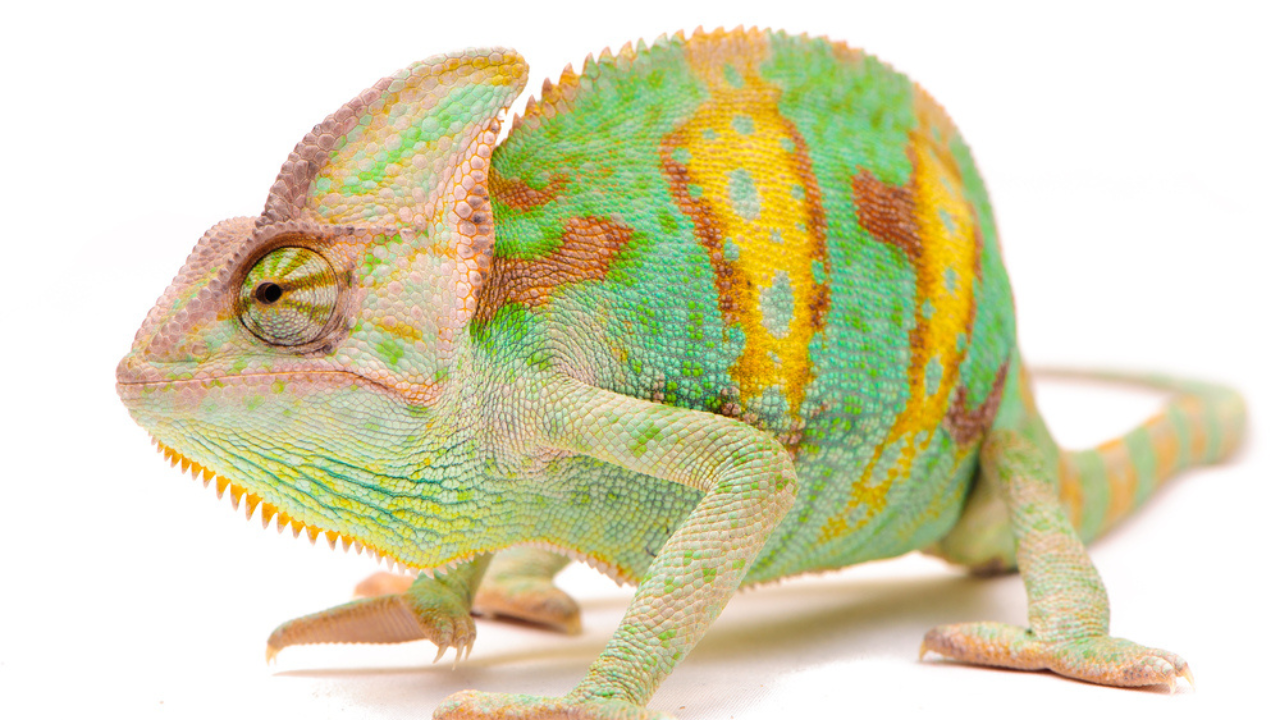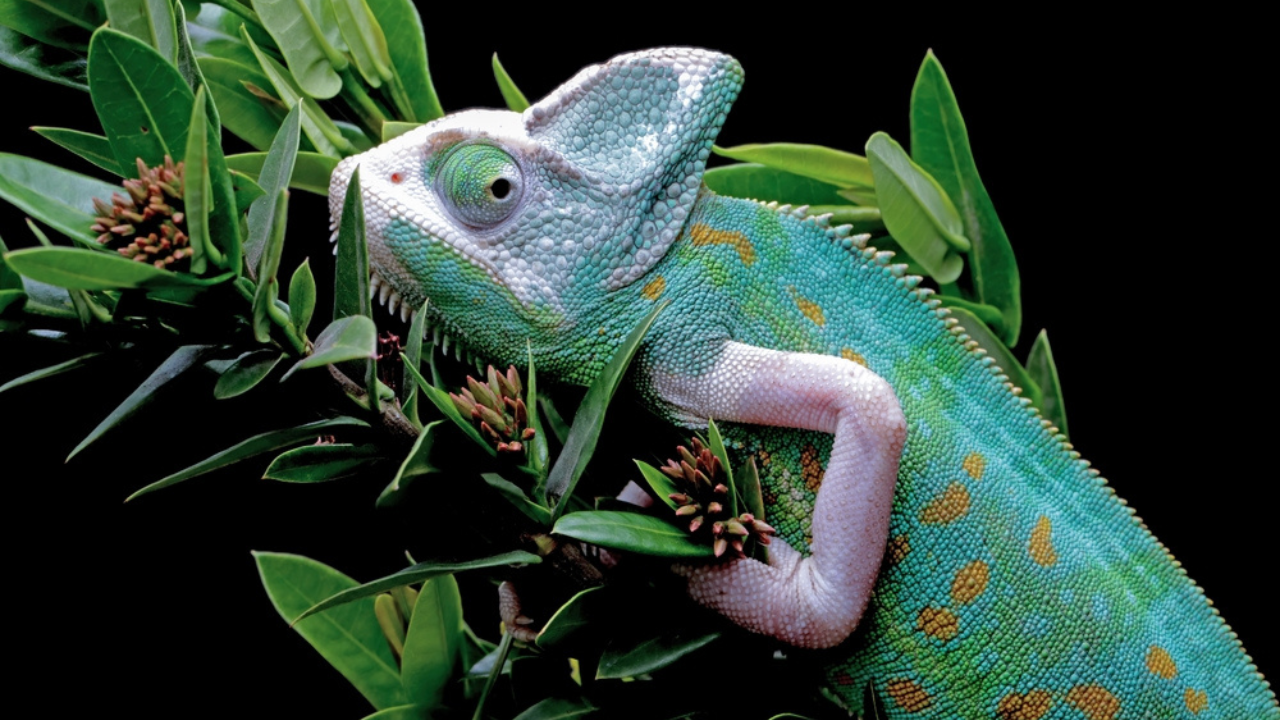Care For Veiled Chameleon: Tips For A Happy & Healthy Pet
Aug 14th 2024
The world of veiled chameleons is exciting and colorful. If you have decided to bring out this wondrous creature, caring for them becomes an utmost responsibility. The question remains: how to care for a veiled chameleon?
First of all, as a pet owner, Congratulations!
These reptiles are marked by their vibrant colors and unique personalities, making them ideal pets. Caring for them is quite different from caring for a dog or cat.
There is no need to fear; TopFlight Dubia has this detailed guide to keep your curious male or shy female veiled chameleon happy and healthy.
Camouflage With Veiled Chameleon

Veiled chameleons, known by their biological name Chamaeleo calyptratus, are native creatures of Yemen and Saudi Arabia. They are primarily found in mountainous regions.
Natural Habitat: Warm & Humid
Location: They are found in places with shrubs and trees to climb
Nature: The change in color of their body depends on their mood, temperature, or health
But what makes them unique?
It is their rather veil-like casque on top of their heads. It helps them regulate their body temperature and is relatively larger in males than females.
The Gender Scale: Male & Female Chameleo

The dimorphic nature of these lizards makes it exciting for pet owners. Here is how to spot the difference between them:
Male Veiled Chameleons
- Appearance: Larger casques, more vibrant colors, and slightly bigger body size.
- Temperament: Generally more territorial and can be aggressive when defending their space.
- Lifespan: Can live up to 6-8 years with proper care.
Female Veiled Chameleons
- Appearance: Smaller casques and softer coloration.
- Temperament: More docile but may require extra care during egg-laying.
- Lifespan: Typically live 4-6 years, especially if they lay eggs frequently.
Pet Lovers: The Organic Care

Let’s get into specifics of chameleon care regarding natural and organic approaches.
01. Tips For Best Environment
The habitat should be comfortable and natural, which is crucial for the animal’s comfort.
Cage Size
The cage must be bigger for males, ideally measuring 24” x 24” x 48”. Females can be housed slightly smaller than males, but more significant is always preferable.
Material
They should use a screen enclosure to ensure proper ventilation in the room. Do not use glass tanks because they hold in a lot of humidity.
Lighting
UVB lighting should be supplied for about 10-12hr/day. This assists them in producing vitamin D3, which is essential for calcium absorption.
Temperature
Basking spot: 85-95°F
Ambient temperature: Recommended temperature of 72-80°F during the day and 65-70°F at night.
Humidity
Keep relative humidity between 50-70%. This may involve using the hand sprayer several times a day, or you may install an automatic misting system.
02. Veiled Chameleon Organic Diet
Pet owners must keep their pet’s diet well-balanced; it helps them activate vibrant colors in their bodies.
Staple Insects
Fresh green vegetables like spinach enrich and can be used in large quantities. Protein materials, such as crickets, Dubia roaches, and silkworms, are needed for muscle development in these amazing creatures.
Ensure these are properly gut-loaded with organic fruits and vegetables, including carrots, kale, and sweet potatoes.
Occasional Treats
Pet owners should give hornworms or waxworms to supplement feeding.
Greens and Veggies
Female chameleons, more significantly, require greens such as collard greens and dandelion leaves.
Supplements
Feed your lizards with calcium (without D3) daily and multivitamins once a week.
03. Hydration: Keep It Natural
They neither consume standing water, instead obtain it in the form of droplets on the leaves of plants. Here’s how to keep them hydrated:
Misting: Spray the enclosure 2-3 times daily.
Drip System: A drip irrigation system is used to imitate rainfall occurrence.
Extra Precautions: Feeding & Caring For The Female Veiled Chameleon
Female veiled chameleons have a unique requirement: egg-laying.
They can produce sterile eggs without their male counterparts, but it could be taxing on health.
Egg-Laying Box
- Make sure you give her a container with moist, organic soil to a depth of 10-12 inches so she can comfortably lay eggs.
- Be observant of signs of egg bound as this is a lethal condition that may be fatal to your pet.
Common Health Issues With Veiled Chameleons

Generally, veiled chameleons are quite sturdy creatures, but like all animals, they have potential health problems.
01. Metabolic Bone Disease (MBD)
They result from low-quality diets that lack calcium or exposure to UVB. This should be avoided by ensuring the environment is well-lit, and the pet is fed calcium-rich foods.
02. Respiratory Infections
Some of the signs include open-mouth breathing and excess mucus. Proper ventilation and the right humidity level can prevent these.
03. Dehydration
Symptoms include loss of appetite, hiccups, and weakened extremities. To avoid these, increase misting and provide a decent drip system.
Exciting Fun Facts About Veiled Chameleons
|
Do you know that veiled chameleons had the lightning-fast ability to flick out their tongue to capture food? |
|
They use the bright colors they display to convey information. When the chameleon is stressed, it becomes dark, but when it is relaxed, it is usually brightly colored. |
Veiled Chameleon Quick Care Check
- Cage: Mesh enclosure, 24” x 24” x 48” minimum
- Lighting: UVB 10-12 hours daily
- Temperature: Basking (85-95°F), Ambient (72-80°F)
- Diet: Gut-loaded crickets, greens, calcium supplements
- Hydration: Misting, drip system
- Humidity: 50-70%
Are You Just A Pet Owner Or An Actual Pet Lover?

It may look hard at first to care for the veiled chameleons, but it becomes very fulfilling once you establish the proper technique.
It does not matter whether you have a colorful male veiled chameleon or a beautiful, graceful female veiled chameleon: responsible care will give you an excellent start to loving your pet wisely.
Therefore, we must set up the required enclosures and environment and prepare for the fascinating sessions in pet care.
Remember this since every veiled chameleon has its character. If you want to feed your chameleon friend the best food, TopFlight Dubia has the best Dubia roaches and is full of nutrition.
Explore the collection of roaches and feed your pet the ultimate taste of Dubia.

